Constant danger is a journalist’s companion in the front-line region, but despite this, media workers do their job and show impressive professional solidarity.
“I remember the day when the russians launched one of their new drones, Chernika, over Kharkiv. The strike came barely a kilometer from my house. Before that, there was a drone strike, and an even more powerful one on the roof of the house opposite. So, my colleagues and I joke bitterly that our work is “accessible from the window.” But at any minute you can become a victim, it doesn’t matter whether you are working or leaving the house for household chores. For us, there is no such thing as “out of work” anymore, and, accordingly, out of danger,” says the coordinator of the Kharkiv JSC, Hanna Chernenko.
“Golden minutes” for a journalist’s work that can cost lives
Hanna Chernenko says that getting out of bed at 3 or 5 a.m. after an explosion and going to work is not all.
“On July 7, after the UAV attack on two districts of Kharkiv,” she says. “We worked together with colleagues, as well as emergency and municipal services, at the sites of the strikes. A 5-hour mixed-type air alert lasted. That is, a new threat was added to the constant threat of missile strikes every few minutes – drone strikes. When the alarm was sounded, work was interrupted to seek shelter in the basements of residential buildings. In the end, the russians did attack: they hit one of the blocks of the old center of Kharkiv with drones. We heard this “buzzing” and saw explosions going off in a new place.”
Unfortunately, this situation is typical for the work of journalists in Kharkiv and the region. After the shelling, media workers, together with emergency and municipal services, leave for the site of the strikes. These are precisely the “golden” minutes of work when journalists document the consequences of the russian crime. But the risks of being attacked again during the first half hour of departure to the place of arrival are quite high. Because attacks by “Geran” and “Shakhed” are always frequent strikes. And with each month, the intensity of shelling of the city only increases, so in 2025, the work of media workers in Kharkiv and the region in the summer has become even more dangerous compared to previous periods of full-scale war. Of course, each media team has its own protocol of action for such a case: how long it takes to leave for the site of the shelling, assuming a real threat of repeated strikes. However, the enemy does not relent; specialists continue to record constant improvements to drones, making them more powerful in terms of both flight range and the explosive power of the warhead, or even introducing new types of drones, such as the already mentioned “Chernika.” Therefore, the protocols of actions are constantly supplemented with new points.
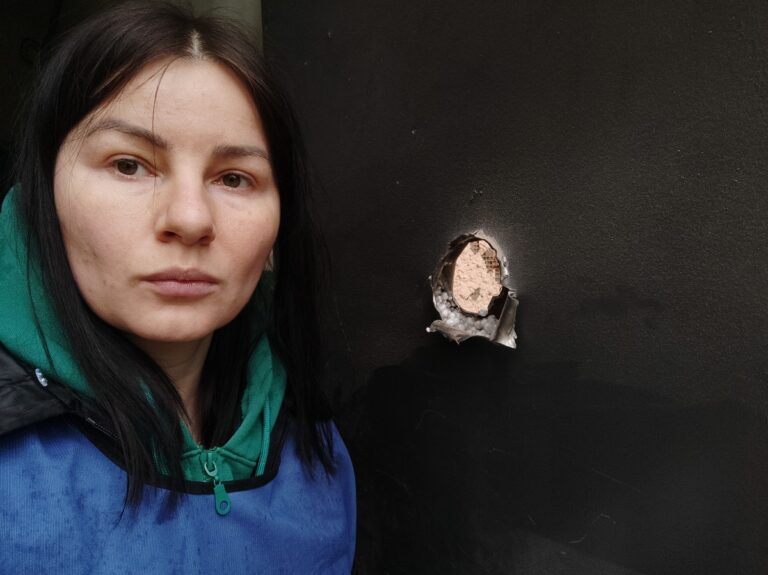
“I first realized that I was living at a training ground where the russians are experimenting and improving weapons,” says Hanna Chernenko. “In the spring of 2023, from the words ‘for the first time in the city they used a guided bomb,’ I had to track how, every week, the distance to which such aircraft shells can reach increased by a district or street. For example, on July 24, such a bomb hit the center. On July 25, the blow fell less than 3 km from my home. And almost the same distance to JSC.”
In Kharkiv, an average journalist, who had no connection with the war until the age of 22, will now be able to distinguish a missile or drone from a fragment by the sound, color, and weight of metal. The JSC has even collected a certain collection of war artifacts.
“To some extent, it will help someone understand our emotions and feelings,” continues Hanna Chernenko. “Because this is something that is difficult to explain to a person who has not been in similar realities. You are a kind of firefighter or ambulance doctor. Only you are on a shift that never ends.”
Hanna Chernenko says, “Without exaggeration, I can share the main fear of every media person – this is coming to your home for filming. Involuntarily, from time to time, you see your own house destroyed. This association cannot help but come when you stand in front of a broken house of the same type. Or you see things that were thrown out by an explosion, and you have the same ones – still intact, and still in their places. Such thoughts were especially frequent in the first six months of the full-scale invasion. Now, they have been replaced by other fears. If I may say so, I have experienced more than one evolution of fear in 2022. Once. I had to film a friend’s destroyed house. And I did not recognize it. It is hard to believe, but the blast wave, dust from broken walls, and the consequences of a fire greatly distorted something familiar… I understood where I was only when I saw bandaged wounded people. Then the realization of reality came to me.”
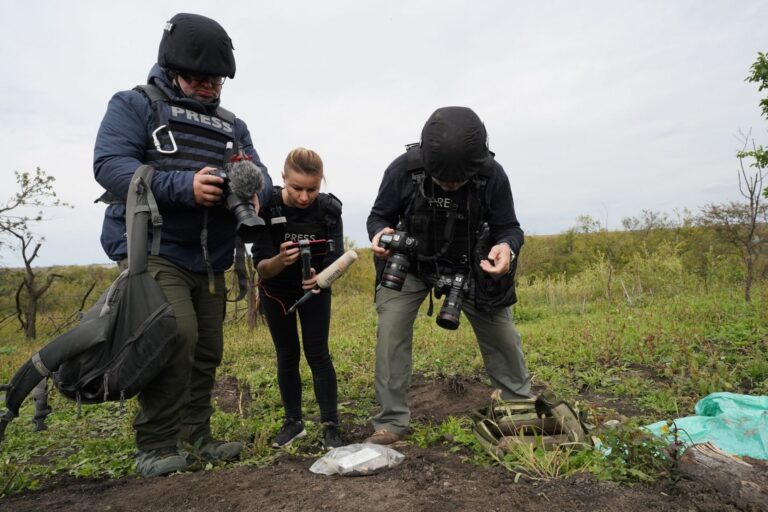
No matter where a journalist works in the front-line zone, it is equally dangerous
The specifics of the risks can be conditionally divided into three categories, depending on where you work exactly. But in any case, each can pose a threat to health or life.
- If it involved work on materials about the military in the immediate vicinity of the front line, in the summer of 2024, it was much easier to access the “trenches.” Now, due to the dominance of drones, including the fiber-optic ones, such trips have become even riskier. Going to combat work can take several days, while previously it was limited to one. Returning can be delayed due to the constant threat from the sky. Accordingly, a long stay in a position is an understandable risk in itself. Another new real risk is programmed drones in ambushes that track cars.
- Hunting for cars by russian military FPV drones is a danger characteristic not only of work on the front line, but also in front-line settlements. In June and July alone, dozens of cases were recorded in the Kharkiv Region when FPV attacked cars of residents and vehicles of emergency services (doctors, firefighters, volunteers with evacuation missions). In early July, in the Zolochiv Community, near the settlement of Odnorobivka, an FPV hit a car in which a family was traveling, killing an 8-year-old boy. His parents and younger brother were hospitalized. The town of Kupiyansk is under attack from FPV and other types of weapons several times a day. All this demonstrates how dangerous even the route to the places where media workers go to gather information can be. Stops in the same Kupiyansk for work began to be reduced to extremely short periods of time so as not to be noticed from the sky by enemy intelligence.
- Working during both announced and “closed” events (even non-mass) on the streets also continues to carry risks. Any event is a target for the enemy.
In all these circumstances, for every newsroom and every journalist in the city and region, the issue of logistics and technical support is not just relevant; it is a matter of life and death.
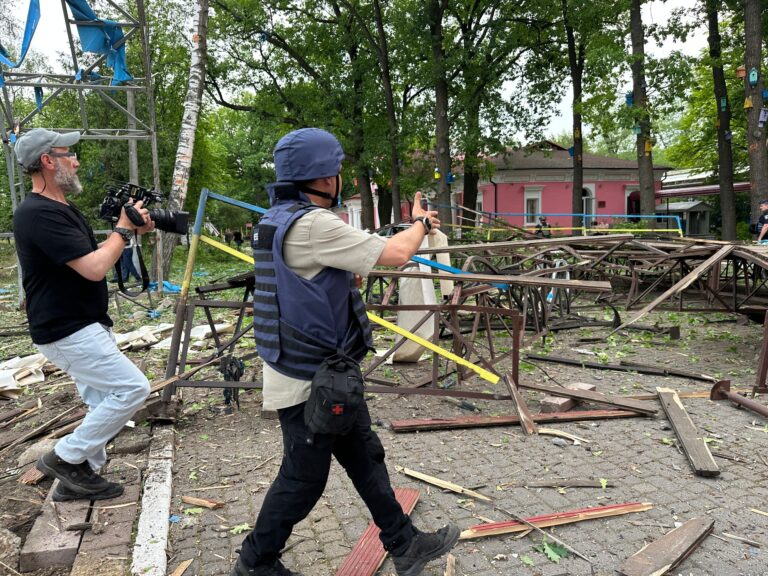
Media of the Kharkiv Region: the situation is getting more complicated, but there is no despair
In August 2024, the National Union of Journalists of Ukraine (NUJU), in order to study the real state of affairs and the needs of regional media, conducted a security situation monitoring, which made it possible to draw up a holistic picture of the state of the Kharkiv regional media industry and identify the needs of journalists. A total of 12 newsrooms participated in the study, ranging from small district newspapers to city television and radio companies. Iryna Khromenko, a profile coordinator for the NUJU network of JSCs, conducted the monitoring.
Media workers identified five main factors that significantly affect their work.
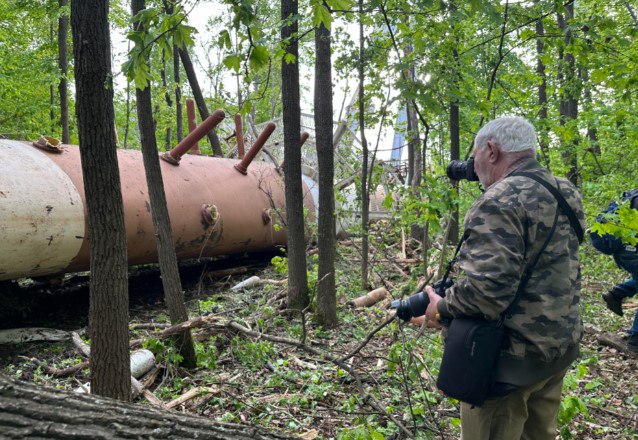
First. The most acute challenge is the proximity to the front line.
“We live too close to the border with the aggressor. The editor visits villages 1-5 km from the enemy every week. He flies over them every day. There is no need to talk about safety,” says Lesia Babkina, deputy editor-in-chief of the Zoria newspaper (Zolochiv Community).
Second. Problems with the power supply.
“We need a power station, we have never had one at all, and during the blackout, such equipment is extremely necessary,” emphasizes Iryna Stolbova, the editor-in-chief of the Visti Barvinkivshchyny newspaper.
Third. Constant communication and Internet outages.
Fourth. Physical danger during work.
Fifth. Economic difficulties.
“The editor visits villages 1-5 kilometers from the enemy every week. He flies over them every day…” This is not the plot of a war movie – this is the reality in which journalists of the Kharkiv Region work.
“Frequent shelling, in particular in Kharkiv and its surroundings, requires us to be especially careful, especially when reporting from the scene of events. Restrictions on movement affect the ability of our journalists to promptly cover events,” says Nataliya Malevska (media group Obiyektyv).
“To reduce the impact of security factors, media workers most need personal protective equipment (33% of respondents) and technical equipment (25% of respondents). Body armor, helmets, and first aid kits are needed. Reliable means of communication are needed – satellite phones, walkie-talkies, mobile devices,” representatives of the Obiyektyv media group emphasize.
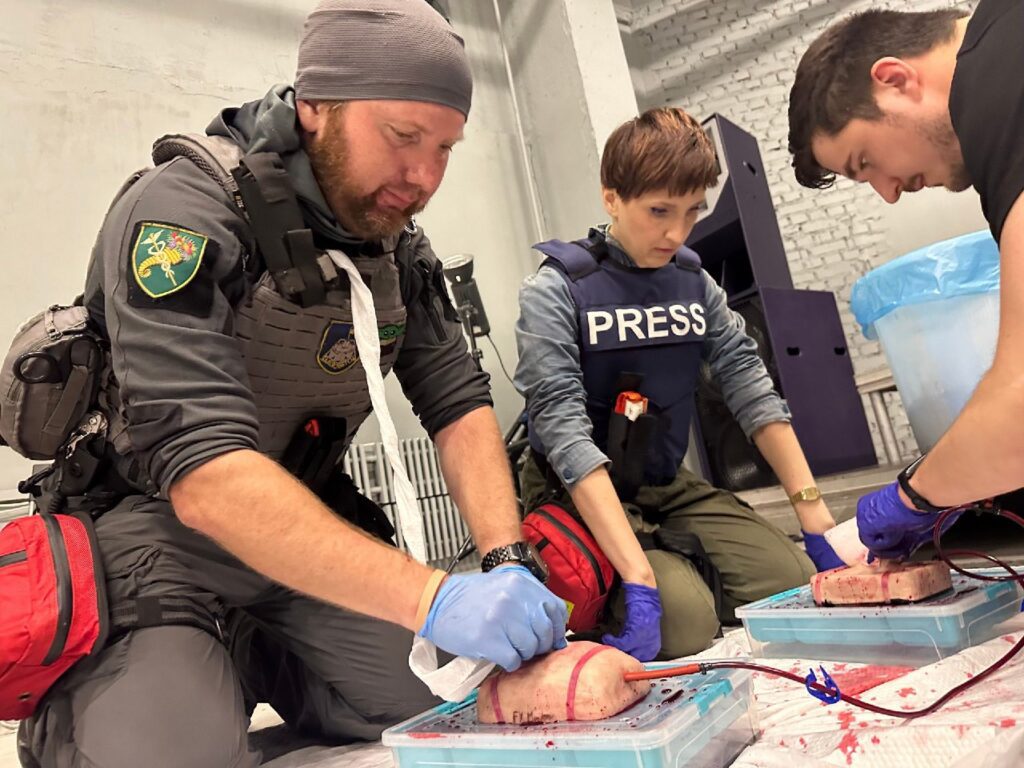
Additionally, during the survey, media workers highlighted the need for premises security systems, security training, and psychological support. The issue of restoring infrastructure to ensure the sustainable operation of the media also remains important. To work in areas of constant shelling, uninterrupted communication, an understanding of logistics, and return routes are still urgently needed. New security measures are also needed. The challenges are creating new needs that no one could have predicted two or three years ago. Hanna Chernenko: “We can’t leave our positions yet – there’s an enemy drone above us.” These are also realities that we have grown accustomed to. Now, teams working even in a 30-kilometer zone from the front line need not only bulletproof vests and an additional type of communication, but also drone detectors. Without this, going out is a crazy, dangerous lottery. In general, working on the front line is becoming increasingly dangerous. Due to drones on fiber optics, places that were risky but still “in operation” a few months ago are no longer accessible. By the way, such equipment is quite expensive. Newsrooms often don’t pay for their purchase. It has simply not yet been included in the protocols for what is necessary for the media. It didn’t have time – the enemy is testing too many types of weapons on the inhabitants of the territories closest to the border too quickly.”
As for the economic challenges that the editorial representatives discussed during the aforementioned survey, they also escalate with each passing month of the war. In the front-line areas, business activity is decreasing, and businesses are relocating to safer regions of the country, so the advertising market is practically collapsing. The media professionals interviewed noted that advertising revenues have fallen by 90% since the beginning of the full-scale invasion, and grant support is also being reduced. At the same time, many newsrooms have lost premises and equipment. It is not surprising that seven out of 10 newspapers are recording a significant drop in circulation. The personnel issue is extremely acute: although six out of 10 newsrooms managed to maintain their teams, others have suffered cuts due to economic difficulties, mobilization, and relocation of employees. Three newsrooms have transferred some of their employees to remote work in safer regions, and one has relocated its entire staff. Investments are also needed to strengthen the protection of digital platforms and data, as cyberattacks on media in the region are also on the rise.
Newsrooms and journalists are looking for a way out of the situation.
Most of the media professionals surveyed note that the decline in paper circulation is accompanied by an increase in online audience, which opens up new opportunities for development and potential monetization.
“Our circulation is unstable. But there is a trend towards an increase in the site’s audience – if last year the norm was 19,000-20,000 views per month, then this year it is over 35,000,” shares Tetiana Lohvina, the head of the Visti Zmiyivshchyny newspaper. She adds that the newsroom has refused the services of Ukrposhta, opting instead for distribution through local authorities.
In total, seven out of 12 newsrooms report a significant increase in subscribers on Telegram, TikTok, Facebook, and Instagram.
So, despite all the dangers and challenges, despite constant shelling, power outages, and communication disruptions, journalists in the Kharkiv Region continue their work. Because they understand that people need reliable information more than ever. In front-line cities and villages, the local newspaper often remains the only reliable source of news.
In all these circumstances and the realities of modern war, it is difficult to overestimate the role of the JSC operating in Kharkiv for the media of the entire region.
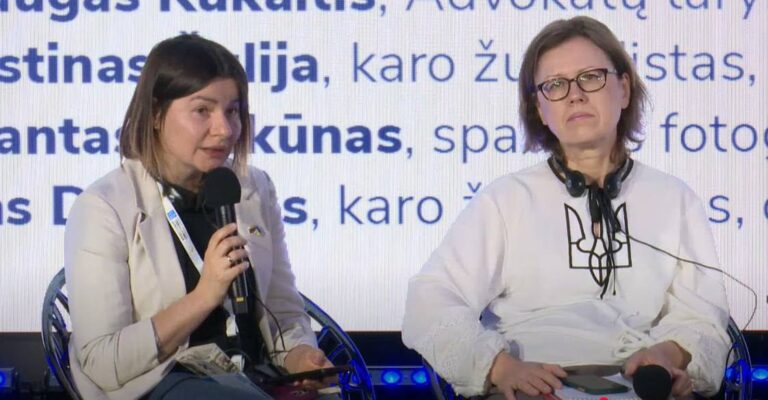
Solidarity in all its dimensions
“The JSC is an important place for Kharkiv. From the outside, it appears to be just an apartment that opens onto an inner courtyard surrounded by high-rise buildings built in the 2000s. The facades of the buildings are cut by debris: the russians dropped cluster bombs into this courtyard as well. These bombs, hitting the ground, release countless shells. Hanna and Volodymyr, two tireless journalists and volunteers, work in the JSC. The center has several computers and a TV studio with a generator. When a power outage occurs in the city, journalists, both Ukrainian and foreign, come here to edit their reports and record programs that are broadcast as soon as the power is restored. The center also provides bulletproof vests for foreign journalists who go to the front; these are blue vests with the inscription Press. When the center is empty, it is a good sign; it means that everything is relatively calm around. Colleagues are working in their newsrooms,” says Christian Eker, a journalist for the Serbian newspaper Danas. But, unfortunately, the center does not remain empty as often as we would like. This means that it is actively working to help every journalist and newsroom that has contacted it. At the same time, the center is one of the “youngest” Centers of the all-Ukrainian network deployed by NUJU. It opened in December 2023 as part of the strategic transformation of the network of Centers of Journalistic Solidarity, which has been operating since April 2022. All Centers have received an updated methodology and work strategy. Now, with a renewed focus, the JSC network is adapting to the priority of supporting Ukrainian and foreign journalists in front-line regions, as well as the restoration of media activities in these regions.
Accordingly, the center assists journalists in resolving all possible problems that arise when working in such a challenging region – from issuing first-aid kits, protective equipment, and other essential items such as sleeping bags to organizing offline and online events for media workers.
Journalists, Ukrainian and from a wide variety of media outlets, with “registration” around the world, speak positively and warmly about the center.
“JSC in Kharkiv is a place for comfortable work and moral rest. Here you can edit the filmed materials, or you can meet with colleagues and friends. I come here after business trips or filming, where I just documented the terrible shelling,” Reuters journalist Vitalii Hnidii shared his impressions.
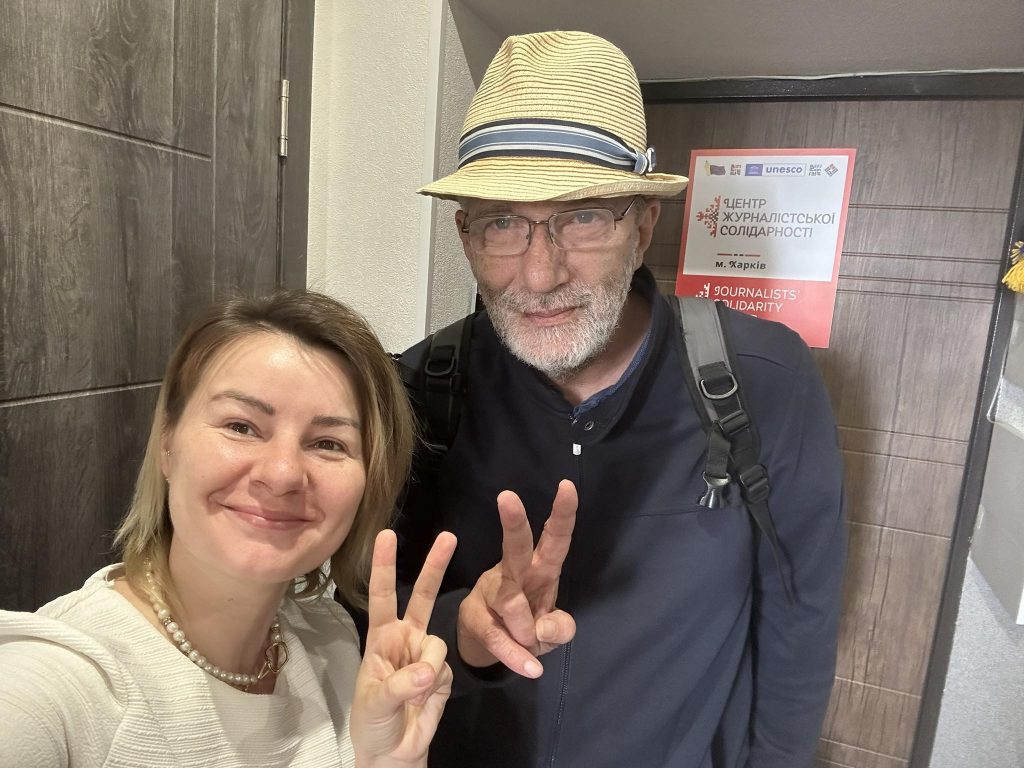
The renowned journalist Andrii Kulikov has visited the center on multiple occasions. In March 2024, it was from the Kharkiv JSC that he conducted a live broadcast on “Public Radio.” According to him, it was an immersion in the problem or even in the city as a whole. He came this year again, again preparing an “atmospheric program about people, changes, and time” at the center.
Gigi Donelli, an Italian journalist with Radio24IlSole24Ore (Milan), author of the podcast 24Reportage, is one of those journalists who know Ukraine without war. At the first opportunity, he travels to a warring country so that his audience can learn the truth. The radio host “hotly” broadcasts what he sees himself as. During his visits to the front-line region, the Kharkiv JSC team supports the media person in order to work as productively as possible. For example, in October 2024, Gigi Donelli prepared several live broadcasts in the JSC co-working space. During the day, the Center employees showed a colleague how the temporary accommodation point for people evacuated from front-line villages works. And in the evening, the radio host talked about the next shelling of residential buildings in Saltivka. The media worker was quickly assisted in reaching the destination by JSC transport.
“In the north, the distance is measured by bombs falling on popular areas less than 40 kilometers from the international border with the russian federation. Once a city of students with universities, today a city torn between the desire for resistance and fatigue from everyday life under constant attacks…” this is how the journalist talks about Kharkiv.
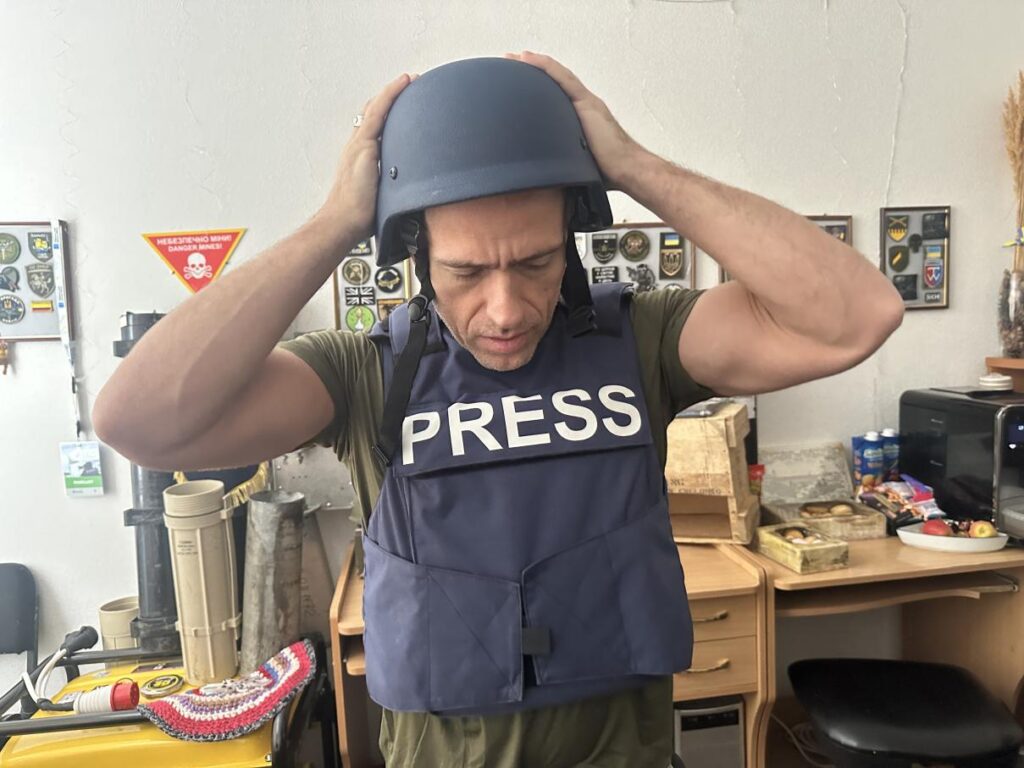
Another foreign guest of the center is a Brazilian journalist. Professor HOC is the creative name of media worker Heni Ozi Cukier.
“It’s very intense, full of emotions. And it’s very different from anything we’ve ever imagined, reading or thinking,” says the political scientist, professor, writer, and blogger with an almost two-million YouTube channel. For work “in the field,” the Kharkiv JSC provided foreign media workers with protective equipment and helped solve all logistical problems.
Thanks to Professor HOC, the Brazilian audience is presented with Ukrainian realities through a wartime diary. There is both about the geopolitical situation and the most vivid impressions of working in Ukraine.

“I publish diaries. They are like tweets, in which I share the whole experience. I see and feel the history of the war, what Ukrainians think and feel. For example, on the train, I talked to many women, elderly people, and children (because men are in battle, in combat), and these were very emotional and shocking stories. Some things are very impressive. There is a strong sense of unity and determination: “I will not give up, I will fight, this is my country.” And this is part of the transformation that may have occurred with Ukrainian identity. Before that, perhaps Ukrainians were not as united and did not have as strong a sense of identity. And Putin cannot destroy this identity.
“…The most difficult thing is talking about oneself. Hanna Chernenko noted that for her, the greatest difficulty is encouraging media workers to share their own experiences. They are willing to cover events that happen to others, but are not always ready to talk about themselves. – So we will pay even more attention to emotional, psychological support for media workers. This will work better as a series of different events – anonymous appeals, individual and group offline meetings,” says Hanna Chernenko.
So, the JSC in Kharkiv is not only about safety and professional support of colleagues. It is really about solidarity in many dimensions of this word. It is unnecessary to remind you of the importance of this during wartime…
Reference Information:
Journalists’ Solidarity Centers are a network of safe hubs for journalists, created in 2022 by the National Union of Journalists of Ukraine in partnership with the International and European Federations of Journalists. The key partner of the network is the UNESCO headquarters. The centers operate in six regions: Kyiv, Zaporizhzhia, Kharkiv, Dnipro, Lviv, and Ivano-Frankivsk. They provide media professionals with protective equipment (body armor, helmets, and first aid kits), equipment, security consultations, legal and psychological assistance, as well as a workspace. Over the past two years, more than 2,400 journalists have used the services of the Centers. Among them are Ukrainian and foreign correspondents, including from Le Monde, Süddeutsche Zeitung, Daily Mail, SVT, RFE/RL, and other leading media outlets.
The centers have become a key infrastructure for the safety of journalists in the war zone and an example of international solidarity in protecting freedom of speech.
How to find the JSCs?
- in Kyiv – 27A Khreshchatyk Street, Tel: 050 680 5204 (Illia Suzdaliev);
- in Lviv – 5 Solomiyi Krushelnytskoyi Street, 2nd floor; Tel: 097 907 9702 (Nataliya Voitovych); point of presence in Chernivtsi – 96 Nezalezhnosti Avenue, Tel: 068 286 3706 (Volodymyr Bober);
- in Ivano-Frankivsk – 25 Sichovykh Striltsiv Street; Tel: 066 677 0726 (Viktoriya Plakhta);
- in Zaporizhzhia – 152 Sobornyi Avenue; Tel: 096 277 5352 (Nataliya Kuzmenko and Valentyna Manzhura);
- in Dnipro – 8 Starokozatska Street; Tel: 050 919 8479 (Nataliya Nazarova);
- in Kharkiv – Tel: 095 421 5477 (Hanna Chernenko).

 THE NATIONAL UNION OF
JOURNALISTS OF UKRAINE
THE NATIONAL UNION OF
JOURNALISTS OF UKRAINE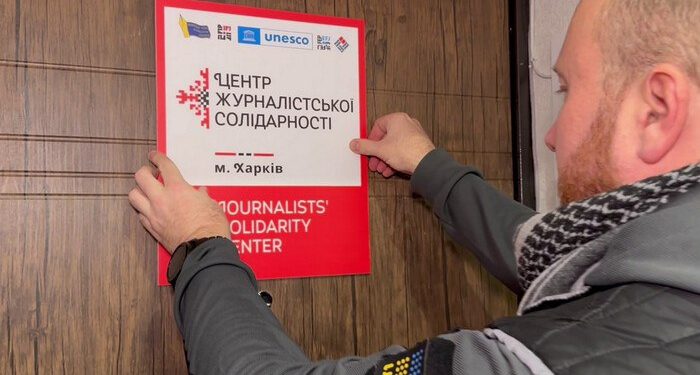
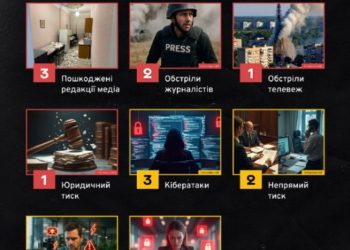
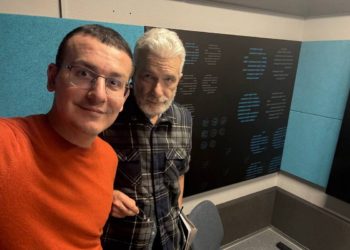
![International Media Organizations: peace plan mustn’t envision amnesty for crimes against journalists 13 Ukrainian flag on Independence Square [Maidan Nezalezhnosti] in Kyiv, Ukraine (archive image). EPA-EFE / Oleh Petrasiuk](https://nuju.org.ua/wp-content/uploads/2025/12/maidan-flag-yezhak-2022-350x250.jpg)
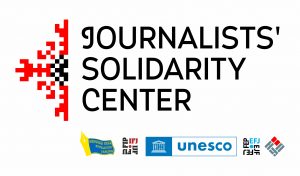
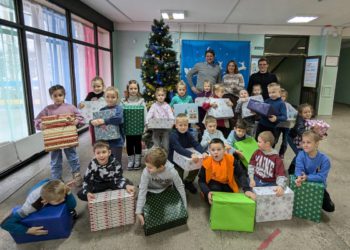


![International Media Organizations: peace plan mustn’t envision amnesty for crimes against journalists 17 Ukrainian flag on Independence Square [Maidan Nezalezhnosti] in Kyiv, Ukraine (archive image). EPA-EFE / Oleh Petrasiuk](https://nuju.org.ua/wp-content/uploads/2025/12/maidan-flag-yezhak-2022-120x86.jpg)




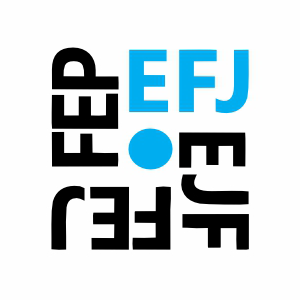



Discussion about this post